JUPITER
Jack Schmidling Productions, Inc.18016 Church Road ~ Marengo IL 60152
| Astrophoto Page | Astrophoto Index | JSP Homepage |
Photographing planets presents some real challenges that are as difficult (if not more) to solve than deep sky objects. These photos are better examples of the difficulties than of high quality images. Being proficient in both fields is the ultimate goal for an astrophotograper.
However, even if all the problems of high resolution photography are solved, there still is Seeing
The images on this page are modest even by amateur standards but what is remarkable about them is that, if you search through astronomy texts of only twenty years ago, you will not find any better.
The technology today is such that, an amateur with modest equipment, can produce planetary images that exceed what the largest telescopes on Earth could produce only a few decades ago.
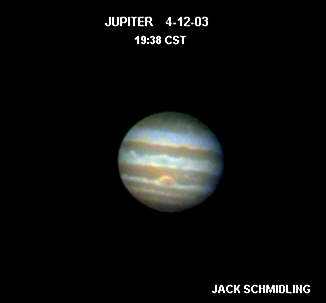
Jupiter
Diameter (mean): 87,000 miles
Volume: 1300 times Earth
Distance (mean): 483 million miles
Rotation period (mean): 10 hours
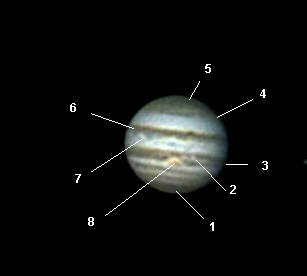
Jovography
2. White Ovals (one of two visible in this image)
3. South Tropical Zone
4. North Temperate Belt
5. North Polar Region
6. North Equatorial Belt
7. Festoon (one of three visible in this image)
8. Great Red Spot
The following film photo was taken with the 10" Newt. The two satellites are Io and Callisto with the shadow of Calisto transiting the planet on the right.
![[m104]](jupiter.jpg)
Jupiter
Calisto in Transit
Scope: 10" Newt at F60
EFL: 50 ft
Exposure: 2 sec
Film: Unhypered Techpan
Filter: Dark Red
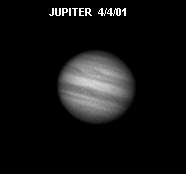
This image was taken with the MX5 CCD camera through the 16" telescope operating at an efl of about 30 feet.
The exposure was .1 second.
The Great Red Spot (GRS) can be seen in the upper equitorial cloud belt on Jupiter.
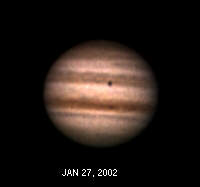
This view of Jupiter shows the shadow of the Jovian sattelite Io crossing the disk.
This image was a .05 sec exposure taken with the MX5C on the 16" scope.
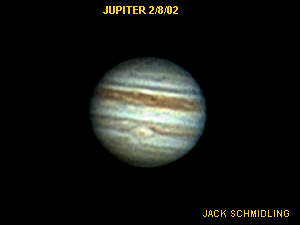
The above image shows the "boring" side of Jupiter whose most interesting feature was a shadow of Io passing over.
This image shows the other side which features the famous Great Red Spot which these days is only a vague pink.
Some cockpit problems have been solved between the two images and this one represents very closely, the colors seen through a telescope visually.
This image was a .05 sec exposure taken with the MX5C on the 16" scope.
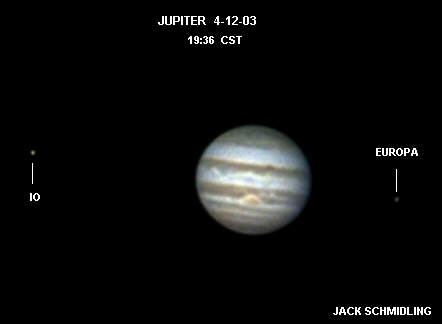
Jupiter, April 12, 2003
The satellites Io and Europa are visible in this image taken with the MX5C.
The satellites Io and Europa are visible in this image taken with the MX5C.
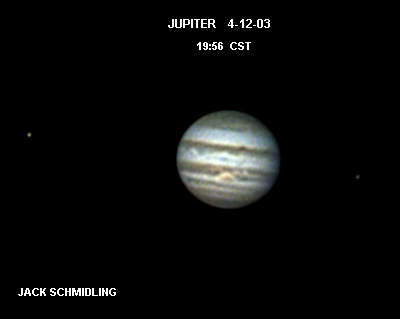
Jupiter, April 12, 2003
This last image shows about the same features but with a little more contrast. It is the same image used in the Jovography image above.